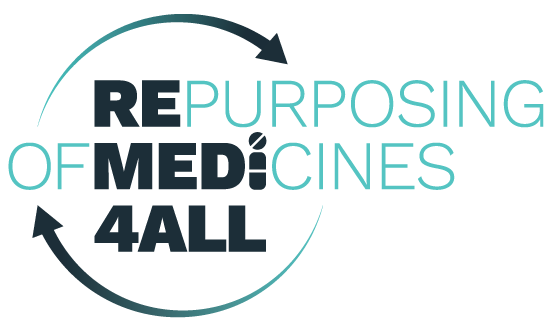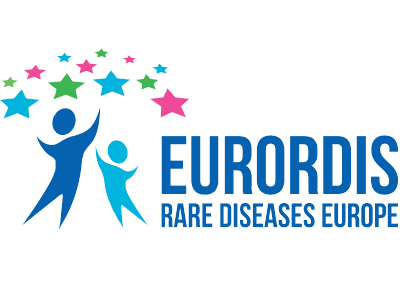From library to landscape: integrative annotation workflows for compound libraries in drug repurposing (December 2025)
Authors: Jeanette Reinshagen, Brinton Seashore-Ludlow, Yojana Gadiya, Anna-Lena Gustavsson, Ziaurrehman Tanoli, Tero Aittokallio, Johanna Huchting, Annika Jenmalm-Jensen, Philip Gribbon, Andrea Zaliani & Flavio Ballante
Article
![]()
In the rapidly advancing landscape of drug discovery and repurposing, efficient access and integration of chemical and bioactivity data from public repositories have become essential. To address this need, we developed two complementary annotation pipelines (KNIME- and Python-based) that automate the extraction and integration of curated chemical and bioactivity data from public repositories. These pipelines support any user-provided compound library, enabling reproducible workflows that integrate data from heterogeneous sources such as ChEMBL and PubChem. As part of the REMEDi4ALL project, with the aim of establishing a European platform for drug repurposing, we validated our framework using a harmonized subset of the Specs repurposing collection, which includes >5000 compounds available at the partner institutes. We also developed two interactive dashboards that support multilayered analyses and visualization by integrating chemical properties, bioactivity profiles, and relational data. Our results demonstrate that this framework streamlines the collection of harmonized data and facilitates analyses that are critical for drug repurposing efforts, while remaining versatile for broader applications in drug discovery. Moreover, the analysis of the annotations reveals that the Specs subset includes chemical scaffolds representative of a significant portion of approved drugs and compounds undergoing clinical evaluation, underscoring its potential as a rich source of drug repurposing candidates. Both pipeline protocols are publicly available online, and the dashboards are open access.
Matrix-directed therapy losartan to identify the effect on the bone resorption marker carboxy-terminal crosslink of type I collagen telopeptide (CTX) in older adolescents and adults with osteogenesis imperfecta recruited from secondary care sites: the ‘MOI-A’ study; a randomised, phase 2/pilot, dose-escalating trial (December 2025)
Authors: Mahboobeh Haji Sadeghi, Judith Cohen, Bronwen Williams, Amy Wilkinson, Sarah Sumpter, Laura Simms, Chao Huang, Keith Pugh, Charlotte Heath, Luca Sangiorgi, Francesca Gurioli, Maria Gnoli, Alice Moroni, Martina Piccinni Leopardi, Clara Del Coco, & Nick Bishop
Article
![]()
Osteogenesis imperfecta (OI) is the most common inherited cause of bone fragility (approximately 1 in 16 000). People with OI suffer bone fragility causing fractures, pain and deformity; sarcopenia causing fatigue and poor endurance; aortic root dilatation and hearing loss. No drug currently has market authorisation to treat OI in Europe. Current standard-of-care is multidisciplinary, with pharmacological interventions—primarily bisphosphonates—directed at increasing bone mass; however, such interventions are of equivocal efficacy. The structural damage that can accumulate as a result of repeated fractures over time may not be reversible. The lack of a treatment with clearly defined efficacy in terms of reducing fracture frequency or the sarcopenia, that is increasingly recognised in this condition, leads to the consideration of alternatives based on what is known about the molecular pathophysiology of the condition. For reasons that are currently unclear, transforming growth factor beta (TGFβ) pathway signalling is increased in OI, and both studies in mouse models and more recently also in humans suggest that reducing TGFβ pathway signalling could be of benefit in OI. This demonstrator project tests the hypothesis that losartan, an antihypertensive agent known to reduce circulating TGFβ, will reduce bone turnover and bone loss and have a positive effect on muscle function and quality of life in adults and older adolescents with OI.
Drug repurposing for cytokine storm: baricitinib, ciclesonide, and acalabrutinib modulate cytokine release in a translational in vitro lymphoblastoid cell line model (December 2025)
Authors: Luka Hiti, Tijana Markovič, Maša Kandušer & Irena Mlinarič-Raščan
Article
![]()
The eyes of the beholder: Perceived barriers to successful drug repurposing (November 2025)
Authors: Zsuzsanna Ida Petykó, Dalma Hosszú, Marcell Csanádi, Kristóf Gyöngyösi, George Dennis Obeng, David Ameyaw, Tamás István Dóczi, Zoltán Kaló, Donald C. Lo, Helene G. van der Meer, Pan Pantziarka & András Inotai
Article
![]()
Despite tremendous advances in new drug development over recent decades, the medical needs of an ever increasing and ageing global population are still significantly unmet. Drug repurposing (DR)—finding new therapeutic uses for existing medicinal substances and products—offers a promising strategy by potentially reducing development time, costs and risk. However, currently, significant hurdles restrict broader application of DR. This study was conducted within the European Commission funded REMEDi4ALL consortium to systematically identify and analyse the key policy obstacles perceived to be hindering the success of DR. A systematic literature review was conducted using PubMed and Embase, supplemented by grey literature searches and expert interviews within the consortium. The extracted data underwent thematic analysis. A barrier tree was developed and validated through five workshops with 80 experts from seven stakeholder groups. From 4059 hits, 192 were included for data extraction, resulting in the identification of 33 key barriers grouped into nine main themes: perception of off-patent medicines, business case for on-patent DR, business case for off-patent DR, non-industry-funded DR, ecosystem for non-profit or small and medium-sized enterprise-driven repurposing, market authorisation, exclusivity rights, health technology assessment and pricing. This comprehensive analysis provides a foundation for prioritizing the main areas for future interventions. Surprisingly, there were considerable differences in how different stakeholders perceived the importance of a number of key barriers. Such multidimensional aspects of DR barriers will need to inform future development of actionable policy recommendations to enhance the DR ecosystem and facilitate broader access to repurposed medicines.
Spatial artifact detection improves the reproducibility of drug screening experiments (October 2025)
Authors: Aleksandr Ianevski, Kristen Nader, Swapnil Potdar, Alexandra Gorbonos, Filipp Ianevski, Ziaurrehman Tanoli, Jani Saarela & Tero Aittokallio
Article
![]()
Reliable and reproducible drug screening experiments are essential for drug discovery and personalized medicine. We demonstrate how systematic experimental errors in drug plates negatively impact data reproducibility, and that conventional quality control (QC) methods based on plate controls fail to detect these spatial errors. To address this limitation, we developed a control-independent QC approach that uses normalized residual fit error (NRFE) to identify systematic artifacts in drug screening experiments. Analysis of >100,000 duplicate measurements from the PRISM pharmacogenomic study revealed that NRFE-flagged experiments show 3-fold lower reproducibility among technical replicates. By integrating NRFE with QC methods to analyze 41,762 matched drug-cell line pairs between two datasets from the Genomics of Drug Sensitivity in Cancer project, we improved the cross-dataset correlation from 0.66 to 0.76. Available as an R package at https://github.com/IanevskiAleksandr/plateQC, plateQC provides a robust toolset for enhancing drug screening data reliability and consistency for basic research and translational applications.
The immunopathogenesis of a cytokine storm: The key mechanisms underlying severe COVID-19 (April 2025)
Authors: Luka Hiti, Tijana Markovič, Mitja Lainscak, Jerneja Farkaš Lainščak, Emil Pal & Irena Mlinarič-Raščan
Article
![]()
A cytokine storm is marked by excessive pro-inflammatory cytokine release, and has emerged as a key factor in severe COVID-19 cases – making it a critical therapeutic target. However, its pathophysiology was poorly understood, which hindered effective treatment. SARS-CoV-2 initially disrupts angiotensin signalling, promoting inflammation through ACE-2 downregulation. Some patients’ immune systems then fail to shift from innate to adaptive immunity, suppressing interferon responses and leading to excessive pyroptosis and neutrophil activation. This amplifies tissue damage and inflammation, creating a pro-inflammatory loop. The result is the disruption of Th1/Th2 and Th17/Treg balances, lymphocyte exhaustion, and extensive blood clotting. Cytokine storm treatments include glucocorticoids to suppress the immune system, monoclonal antibodies to neutralize specific cytokines, and JAK inhibitors to block cytokine receptor signalling. However, the most effective treatment options for mitigating SARS-CoV-2 infection remain vaccines as a preventive measure and antiviral drugs for the early stages of infection. This article synthesizes insights into immune dysregulation in COVID-19, offering a framework to better understand cytokine storms and to improve monitoring, biomarker discovery, and treatment strategies for COVID-19 and other conditions involving cytokine storms.
Computational drug repurposing: approaches, evaluation of in silico resources and case studies (March 2025)
Authors: Ziaurrehman Tanoli, Adrià Fernández-Torras, Umut Onur Özcan, Aleksandr Kushnir, Kristen Michelle Nader, Yojana Gadiya, Laura Fiorenza, Aleksandr Ianevski, Markus Vähä-Koskela, Mitro Miihkinen, Umair Seemab, Henri Leinonen, Brinton Seashore-Ludlow, Marianna Tampere, Adelinn Kalman, Flavio Ballante, Emilio Benfenati, Gary Saunders, Swapnil Potdar, Ismael Gómez García, Ricard García-Serna, Carmine Talarico, Andrea Rosario Beccari, Wesley Schaal, Andrea Polo, Susan Costantini, Enrico Cabri, Marc Jacobs, Jani Saarela, Alfredo Budillon, Ola Spjuth, Päivi Östling, Henri Xhaard, Jordi Quintana, Jordi Mestres, Philip Gribbon, Anton E. Ussi, Donald C. Lo, Martin de Kort, Krister Wennerberg, Maddalena Fratelli, Jordi Carreras-Puigvert & Tero Aittokallio
Article
![]()
Repurposing of existing drugs for new indications has attracted substantial attention owing to its potential to accelerate drug development and reduce costs. Hundreds of computational resources such as databases and predictive platforms have been developed that can be applied for drug repurposing, making it challenging to select the right resource for a specific drug repurposing project. With the aim of helping to address this challenge, here we overview computational approaches to drug repurposing based on a comprehensive survey of available in silico resources using a purpose-built drug repurposing ontology that classifies the resources into hierarchical categories and provides application-specific information. We also present an expert evaluation of selected resources and three drug repurposing case studies implemented within the Horizon Europe REMEDi4ALL project to demonstrate the practical use of the resources. This comprehensive Review with expert evaluations and case studies provides guidelines and recommendations on the best use of various in silico resources for drug repurposing and establishes a basis for a sustainable and extendable drug repurposing web catalogue.
Drug Repurposing in Pancreatic Cancer: A Multi-Stakeholder Perspective to Improve Treatment Options for Pancreatic Cancer Patients (March 2025)
Authors: Evelyn Hewitt, Gauthier Bouche, Alexandre Costa Alencar, Stephen J Bigelsen, Raluca Radu, Violeta Stoyanova-Beninska, Alfredo Carrato, Federica Valsecchi, Alicia Soler Cantón, Helene G van der Meer, María Laura García Bermejo, Alfredo Budillon, Luca Cardone, Ilse Rooman, Hans Platteeuw, Judit Baijet & Claudia Fuchs
Article
![]()
Pancreatic cancer (PC) remains one of the most challenging malignancies to treat. Current therapeutic options are unsatisfactory, and there is an urgent need for more effective and less toxic drugs to improve the dismal prognosis of PC. In recent years, drug repurposing (DR) has emerged as an attractive strategy to identify novel treatments for PC by leveraging existing drugs approved for other indications. Through the use of electronic medical records, Artificial Intelligence, study of metabolic pathways, signalling pathways, and many other approaches, it has become much easier in recent years to identify potential novel uses for old drugs. Although policy, funding and research attention in this area are steadily growing, major challenges to efficient and effective patient-centric DR in PC need to be addressed. These include but are not limited to regulatory, financial and funding barriers and the lack of coordination and collaboration among several sectors and stakeholders. To explore the opportunities and challenges associated with DR in PC, a one-day multi-stakeholder meeting was held on 14th of November 2023 in Brussels, Belgium as part of the REMEDi4ALL project. This meeting provided a platform for researchers, clinicians, industry representatives, funders, regulatory experts, and patient advocates to discuss and propose actions to optimize and accelerate DR in PC. Insights from this meeting support the potential of DR to enhance PC treatment options while highlighting the importance of systemic and supportive changes in the regulatory, policy and funding landscapes, interdisciplinary collaboration, data sharing, and patient involvement in driving therapeutic innovation. This summary highlights key outcomes and recommendations from the meeting in informing future efforts to advance DR initiatives in the context of PC.
Cell Painting: a decade of discovery and innovation in cellular imaging (December 2024)
Authors: Srijit Seal, Maria-Anna Trapotsi, Ola Spjuth, Shantanu Singh, Jordi Carreras-Puigvert, Nigel Greene, Andreas Bender & Anne E. Carpenter
Article
![]()
Modern quantitative image analysis techniques have enabled high-throughput, high-content imaging experiments. Image-based profiling leverages the rich information in images to identify similarities or differences among biological samples, rather than measuring a few features, as in high-content screening. Here, we review a decade of advancements and applications of Cell Painting, a microscopy-based cell-labeling assay aiming to capture a cell’s state, introduced in 2013 to optimize and standardize image-based profiling. Cell Painting’s ability to capture cellular responses to various perturbations has expanded owing to improvements in the protocol, adaptations for different perturbations, and enhanced methodologies for feature extraction, quality control, and batch-effect correction. Cell Painting is a versatile tool that has been used in various applications, alone or with other -omics data, to decipher the mechanism of action of a compound, its toxicity profile, and other biological effects. Future advances will likely involve computational and experimental techniques, new publicly available datasets, and integration with other high-content data types.
Single-cell transcriptomes identify patient-tailored therapies for selective co-inhibition
of cancer clones (October 2024)
Authors: Aleksandr Ianevski, Kristen Nader, Kyriaki Driva, Wojciech Senkowski, Daria Bulanova, Lidia Moyano-Galceran, Tanja Ruokoranta, Heikki Kuusanmäki, Nemo Ikonen, Philipp Sergeev, Markus Vähä-Koskela, Anil K. Giri, Anna Vähärautio, Mika Kontro, Kimmo Porkka, Esa Pitkänen, Caroline A. Heckman, Krister Wennerberg & Tero Aittokallio
Article
![]()
Intratumoral cellular heterogeneity necessitates multi-targeting therapies for improved clinical benefits in advanced malignancies. However, systematic identification of patient-specific treatments that selectively co-inhibit cancerous cell populations poses a combinatorial challenge, since the number of possible drug-dose combinations vastly exceeds what could be tested in patient cells. Here, we describe a machine learning approach, scTherapy, which leverages single-cell transcriptomic profiles to prioritize multi-targeting treatment options for individual patients with hematological cancers or solid tumors. Patient-specific treatments reveal a wide spectrum of co-inhibitors of multiple biological pathways predicted for primary cells from heterogenous cohorts of patients with acute myeloid leukemia and high-grade serous ovarian carcinoma, each with unique resistance patterns and synergy mechanisms. Experimental validations confirm that 96% of the multi-targeting treatments exhibit selective efficacy or synergy, and 83% demonstrate low toxicity to normal cells, highlighting their potential for therapeutic efficacy and safety. In a pan-cancer analysis across five cancer types, 25% of the predicted treatments are shared among the patients of the same tumor type, while 19% of the treatments are patient-specific. Our approach provides a widely-applicable strategy to identify personalized treatment regimens that selectively co-inhibit malignant cells and avoid inhibition of non-cancerous cells, thereby increasing their likelihood for clinical success.
Randomized phase 2 study of valproic acid combined with simvastatin and gemcitabine/nab-paclitaxel-based regimens in untreated metastatic pancreatic adenocarcinoma patients: the VESPA trial study protocol (September 2024)
Authors: Alfredo Budillon, Alessandra Leone, Eugenia Passaro, Lucrezia Silvestro, Francesca Foschini, Federica Iannelli, Maria Serena Roca, Marina Macchini, Francesca Bruzzese, Maria Laura Garcia Bermejo, Mercedes Rodriguez Garrote, Giampaolo Tortora, Michele Milella, Michele Reni, Claudia Fuchs, Eve Hewitt, Christine Kubiak, Elena Di Gennaro, Diana Giannarelli & Antonio Avallone
Article
![]()
Metastatic pancreatic ductal adenocarcinoma (mPDAC) patients have very poor prognosis highlighting
the urgent need of novel treatments. In this regard, repurposing non-oncology already-approved drugs might be an
attractive strategy to offer more-effective treatment easily tested in clinical trials. Accumulating evidence suggests that epigenetic deregulation is a hallmark of cancer contributing to treatment resistance in several solid tumors,
including PDAC. Histone deacetylase inhibitors (HDACi) are epigenetic drugs we have investigated preclinically and
clinically as anticancer agents. Valproic acid (VPA) is a generic low-cost anticonvulsant and mood stabilizer with HDAC
inhibitory activity, and anticancer properties also demonstrated in PDAC models. Statins use was reported to be
associated with lower mortality risk in patients with pancreatic cancer and statins have been shown to have a direct
antitumor effect when used alone or in combination therapy. We recently showed capability of VPA/Simvastatin (SIM)
combination to potentiate the antitumor activity of gemcitabine/nab-paclitaxel in vitro and in vivo PDAC preclinical
models.
Improved Detection of Drug-Induced Liver Injury by Integrating Predicted In Vivo and In Vitro Data (August 2024)
Authors: Srijit Seal, Dominic Williams, Layla Hosseini-Gerami, Manas Mahale, Anne E Carpenter, Ola Spjuth & Andreas Bender
Article
![]()
Drug-induced liver injury (DILI) has been a significant challenge in drug discovery, often leading to clinical trial failures and necessitating drug withdrawals. Over the last decade, the existing suite of in vitro proxy-DILI assays has generally improved at identifying compounds with hepatotoxicity. However, there is considerable interest in enhancing the in silico prediction of DILI because it allows for evaluating large sets of compounds more quickly and cost-effectively, particularly in the early stages of projects. In this study, we aim to study ML models for DILI prediction that first predict nine proxy-DILI labels and then use them as features in addition to chemical structural features to predict DILI. The features include in vitro (e.g., mitochondrial toxicity, bile salt export pump inhibition) data, in vivo (e.g., preclinical rat hepatotoxicity studies) data, pharmacokinetic parameters of maximum concentration, structural fingerprints, and physicochemical parameters. We trained DILI-prediction models on 888 compounds from the DILI data set (composed of DILIst and DILIrank) and tested them on a held-out external test set of 223 compounds from the DILI data set. The best model, DILIPredictor, attained an AUC-PR of 0.79. This model enabled the detection of the top 25 toxic compounds (2.68 LR+, positive likelihood ratio) compared to models using only structural features (1.65 LR+ score). Using feature interpretation from DILIPredictor, we identified the chemical substructures causing DILI and differentiated cases of DILI caused by compounds in animals but not in humans. For example, DILIPredictor correctly recognized 2-butoxyethanol as nontoxic in humans despite its hepatotoxicity in mice models. Overall, the DILIPredictor model improves the detection of compounds causing DILI with an improved differentiation between animal and human sensitivity and the potential for mechanism evaluation.
Artificial intelligence for high content imaging in drug discovery (August 2024)
Authors: Jordi Carreras-Puigvert & Ola Spjuth
Article
![]()
Artificial intelligence (AI) and high-content imaging (HCI) are contributing to advancements in drug discovery, propelled by the recent progress in deep neural networks. This review highlights AI’s role in analysis of HCI data from fixed and live-cell imaging, enabling novel label-free and multi-channel fluorescent screening methods, and improving compound profiling. HCI experiments are rapid and cost-effective, facilitating large data set accumulation for AI model training. However, the success of AI in drug discovery also depends on high-quality data, reproducible experiments, and robust validation to ensure model performance. Despite challenges like the need for annotated compounds and managing vast image data, AI’s potential in phenotypic screening and drug profiling is significant. Future improvements in AI, including increased interpretability and integration of multiple modalities, are expected to solidify AI and HCI’s role in drug discovery.
Attention-based approach to predict drug–target interactions across seven target superfamilies (August 2024)
Authors: Aron Schulman, Juho Rousu, Tero Aittokallio & Ziaurrehman Tanoli
Article
![]()
Drug–target interactions (DTIs) hold a pivotal role in drug repurposing and elucidation of drug mechanisms of action. While single-targeted drugs have demonstrated clinical success, they often exhibit limited efficacy against complex diseases, such as cancers, whose development and treatment is dependent on several biological processes. Therefore, a comprehensive understanding of primary, secondary and even inactive targets becomes essential in the quest for effective and safe treatments for cancer and other indications. The human proteome offers over a thousand druggable targets, yet most FDA-approved drugs bind to only a small fraction of these targets.This study introduces an attention-based method (called as MMAtt-DTA) to predict drug–target bioactivities across human proteins within seven superfamilies. We meticulously examined nine different descriptor sets to identify optimal signature descriptors for predicting novel DTIs. Our testing results demonstrated Spearman correlations exceeding 0.72 (P < 0.001) for six out of seven superfamilies. The proposed method outperformed fourteen state-of-the-art machine learning, deep learning and graph-based methods and maintained relatively high performance for most target superfamilies when tested with independent bioactivity data sources. We computationally validated 185 676 drug–target pairs from ChEMBL-V33 that were not available during model training, achieving a reasonable performance with Spearman correlation >0.57 (P < 0.001) for most superfamilies. This underscores the robustness of the proposed method for predicting novel DTIs. Finally, we applied our method to predict missing bioactivities among 3492 approved molecules in ChEMBL-V33, offering a valuable tool for advancing drug mechanism discovery and repurposing existing drugs for new indications.
RepurposeDrugs: an interactive web-portal and predictive platform for repurposing mono- and combination therapies (July 2024)
Authors: Aleksandr Ianevski, Aleksandr Kushnir, Kristen Nader, Mitro Miihkinen, Henri Xhaard, Tero Aittokallio & Ziaurrehman Tanoli
Article
![]()
RepurposeDrugs (https://repurposedrugs.org/) is a comprehensive web-portal that combines a unique drug indication database with a machine learning (ML) predictor to discover new drug-indication associations for approved as well as investigational mono and combination therapies. The platform provides detailed information on treatment status, disease indications and clinical trials across 25 indication categories, including neoplasms and cardiovascular conditions. The current version comprises 4314 compounds (approved, terminated or investigational) and 161 drug combinations linked to 1756 indications/conditions, totaling 28 148 drug–disease pairs. By leveraging data on both approved and failed indications, RepurposeDrugs provides ML-based predictions for the approval potential of new drug–disease indications, both for mono- and combinatorial therapies, demonstrating high predictive accuracy in cross-validation. The validity of the ML predictor is validated through a number of real-world case studies, demonstrating its predictive power to accurately identify repurposing candidates with a high likelihood of future approval. To our knowledge, RepurposeDrugs web-portal is the first integrative database and ML-based predictor for interactive exploration and prediction of both single-drug and combination approval likelihood across indications. Given its broad coverage of indication areas and therapeutic options, we expect it accelerates many future drug repurposing projects.
Drug repurposing in Rett and Rett-like syndromes: a promising yet underrated opportunity? (July 2024)
Authors: Claudia Fuchs, Peter A. C. ‘t Hoen, Annelieke R. Müller, Friederike Ehrhart & Clara D. M. Van Karnebeek
Article
![]()
Rett syndrome (RTT) and Rett-like syndromes [i.e., CDKL5 deficiency disorder (CDD) and FOXG1-syndrome] represent rare yet profoundly impactful neurodevelopmental disorders (NDDs). The severity and complexity of symptoms associated with these disorders, including cognitive impairment, motor dysfunction, seizures and other neurological features significantly affect the quality of life of patients and families. Despite ongoing research efforts to identify potential therapeutic targets and develop novel treatments, current therapeutic options remain limited. Here the potential of drug repurposing (DR) as a promising avenue for addressing the unmet medical needs of individuals with RTT and related disorders is explored. Leveraging existing drugs for new therapeutic purposes, DR presents an attractive strategy, particularly suited for neurological disorders given the complexities of the central nervous system (CNS) and the challenges in blood-brain barrier penetration. The current landscape of DR efforts in these syndromes is thoroughly examined, with partiuclar focus on shared molecular pathways and potential common drug targets across these conditions.
Integrated drug profiling and CRISPR screening identify BCR::ABL1-independent vulnerabilities in chronic myeloid leukemia (May 2024)
Authors: Shady Adnan Awad, Olli Dufva, Jay Klievink, Ella Karjalainen, Aleksandr Ianevski, Paavo Pietarinen, Daehong Kim, Swapnil Potdar, Maija Wolf, Kourosh Lotfi, Tero Aittokallio, Krister Wennerberg, Kimmo Porkka, & Satu Mustjok
Article
![]()
BCR::ABL1-independent pathways contribute to primary resistance to tyrosine kinase inhibitor (TKI) treatment in chronic myeloid leukemia (CML) and play a role in leukemic stem cell persistence. Here, we perform ex vivo drug screening of CML CD34+ leukemic stem/progenitor cells using 100 single drugs and TKI-drug combinations and identify sensitivities to Wee1, MDM2, and BCL2 inhibitors. These agents effectively inhibit primitive CD34+CD38− CML cells and demonstrate potent synergies when combined with TKIs. Flow-cytometry-based drug screening identifies mepacrine to induce differentiation of CD34+CD38− cells. We employ genome-wide CRISPR-Cas9 screening for six drugs, and mediator complex, apoptosis, and erythroid-lineage-related genes are identified as key resistance hits for TKIs, whereas the Wee1 inhibitor AZD1775 and mepacrine exhibit distinct resistance profiles. KCTD5, a consistent TKI-resistance-conferring gene, is found to mediate TKI-induced BCR::ABL1 ubiquitination. In summary, we delineate potential mechanisms for primary TKI resistance and non-BCR::ABL1-targeting drugs, offering insights for optimizing CML treatment.
Exploring SureChEMBL from a drug discovery perspective (May 2024)
Authors: Yojana Gadiya, Simran Shetty, Martin Hoffmann-Apitius, Philip Gribbon & Andrea Zaliani
Article
![]()
In the pharmaceutical industry, the patent protection of drugs and medicines is accorded importance because of the high costs involved in the development of novel drugs. Over the years, researchers have analyzed patent documents to identify freedom-to-operate spaces for novel drug candidates. To assist this, several well-established public patent document data repositories have enabled automated methodologies for extracting information on therapeutic agents. In this study, we delve into one such publicly available patent database, SureChEMBL, which catalogues patent documents related to life sciences. Our exploration begins by identifying patent compounds across public chemical data resources, followed by pinpointing sections in patent documents where the chemical annotations were found. Next, we exhibit the potential of compounds to serve as drug candidates by evaluating their conformity to drug-likeness criteria. Lastly, we examine the drug development stage reported for these compounds to understand their clinical success. In summary, our investigation aims at providing a comprehensive overview of the patent compounds catalogued in SureChEMBL, assessing their relevance to pharmaceutical drug discovery.
Medical Management for Fracture Prevention in Children with Osteogenesis Imperfecta (March 2024)
Authors: Paul Arundel, Nick Bishop
Article
![]()
There are no licensed treatments for children with osteogenesis imperfecta. Children currently receive off-label treatment with bisphosphonates, without any consistent approach to dose, drug or route of administration. Meta-analyses suggest that anti-fracture efficacy of such interventions is equivocal. New therapies are undergoing clinical trials, and it is likely that one or more will receive marketing authorisation within the next three to five years. The long-term outcome from such interventions will need to be studied carefully well beyond the period over which the clinical trials are conducted, and a consistent approach to the collection of data in this regard will be needed as a major collaborative effort.
From pixels to phenotypes: Integrating image-based profiling with cell health data as BioMorph features improves interpretability (February 2024)
Authors: Srijit Seal, Jordi Carreras-Puigvert, Shantanu Singh, Anne E. Carpenter, Ola Spjuth & Andreas Bender
Article
![]()
Cell Painting assays generate morphological profiles that are versatile descriptors of biological systems and have been used to predict in vitro and in vivo drug effects. However, Cell Painting features extracted from classical software such as CellProfiler are based on statistical calculations and often not readily biologically interpretable. In this study, we propose a new feature space, which we call BioMorph, that maps these Cell Painting features with readouts from comprehensive Cell Health assays. We validated that the resulting BioMorph space effectively connected compounds not only with the morphological features associated with their bioactivity but with deeper insights into phenotypic characteristics and cellular processes associated with the given bioactivity. The BioMorph space revealed the mechanism of action for individual compounds, including dual-acting compounds such as emetine, an inhibitor of both protein synthesis and DNA replication. Overall, BioMorph space offers a biologically relevant way to interpret the cell morphological features derived using software such as CellProfiler and to generate hypotheses for experimental validation.
Insights into Drug Cardiotoxicity from Biological and Chemical Data: The First Public Classifiers for FDA Drug-Induced Cardiotoxicity Rank (February 2024)
Authors: Srijit Seal, Ola Spjuth, Layla Hosseini-Gerami, Miguel García-Ortegón, Shantanu Singh, Andreas Bender & Anne E. Carpenter
Article
![]()
Drug-induced cardiotoxicity (DICT) is a major concern in drug development, accounting for 10–14% of postmarket withdrawals. In this study, we explored the capabilities of chemical and biological data to predict cardiotoxicity, using the recently released DICTrank data set from the United States FDA. We found that such data, including protein targets, especially those related to ion channels (e.g., hERG), physicochemical properties (e.g., electrotopological state), and peak concentration in plasma offer strong predictive ability for DICT. Compounds annotated with mechanisms of action such as cyclooxygenase inhibition could distinguish between most-concern and no-concern DICT. Cell Painting features for ER stress discerned most-concern cardiotoxic from nontoxic compounds. Models based on physicochemical properties provided substantial predictive accuracy (AUCPR = 0.93). With the availability of omics data in the future, using biological data promises enhanced predictability and deeper mechanistic insights, paving the way for safer drug development
Drug repurposing for rare: progress and opportunities for the rare disease community (January 2024)
Authors: Anneliene Hechtelt Jonker, Daniel O’Connor, Maria Cavaller-Bellaubi, Christine Fetro, Maria Gogou, Peter A. C. ‘T Hoen, Martin de Kort, Heather Stone, Nivedita Valentine &Anna Maria Gerdina Pasmooij
Article
![]()
Repurposing is one of the key opportunities to address the unmet rare diseases therapeutic need. Based on cases of drug repurposing in small population conditions, and previous work in drug repurposing, we analyzed the most important lessons learned, such as the sharing of clinical observations, reaching out to regulatory scientific advice at an early stage, and public-private collaboration. In addition, current upcoming trends in the field of drug repurposing in rare diseases were analyzed, including the role these trends could play in the rare diseases’ ecosystem. Specifically, we cover the opportunities of innovation platforms, the use of real-world data, the use of artificial intelligence, regulatory initiatives in repurposing, and patient engagement throughout the repurposing project. The outcomes from these emerging activities will help progress the field of drug repurposing for the benefit of patients, public health and medicines development.
Robust scoring of selective drug responses for patient-tailored therapy selection (November 2023)
Authors: Yingjia Chen, Liye He, Aleksandr Ianevski, Pilar Ayuda-Durán, Swapnil Potdar, Jani Saarela, Juho J. Miettinen, Sari Kytölä, Susanna Miettinen, Mikko Manninen, Caroline A. Heckman, Jorrit M. Enserink, Krister Wennerberg & Tero Aittokallio
Article
![]()
Most patients with advanced malignancies are treated with severely toxic, first-line chemotherapies. Personalized treatment strategies have led to improved patient outcomes and could replace one-size-fits-all therapies, yet they need to be tailored by testing of a range of targeted drugs in primary patient cells. Most functional precision medicine studies use simple drug-response metrics, which cannot quantify the selective effects of drugs (i.e., the differential responses of cancer cells and normal cells). We developed a computational method for selective drug-sensitivity scoring (DSS), which enables normalization of the individual patient’s responses against normal cell responses. The selective response scoring uses the inhibition of noncancerous cells as a proxy for potential drug toxicity, which can in turn be used to identify effective and safer treatment options. Here, we explain how to apply the selective DSS calculation for guiding precision medicine in patients with leukemia treated across three cancer centers in Europe and the USA; the generic methods are also widely applicable to other malignancies that are amenable to drug testing. The open-source and extendable R-codes provide a robust means to tailor personalized treatment strategies on the basis of increasingly available ex vivo drug-testing data from patients in real-world and clinical trial settings. We also make available drug-response profiles to 527 anticancer compounds tested in 10 healthy bone marrow samples as reference data for selective scoring and de-prioritization of drugs that show broadly toxic effects. The procedure takes <60 min and requires basic skills in R.
DRUG REPURPOSING: POLICY BARRIERS TO USING EXISTING PHARMACEUTICALS IN NEW INDICATIONS: RESULTS OF A SYSTEMATIC LITERATURE REVIEW (2024)
Authors: Kristóf Gyöngyösi, Zsuzsanna Petykó, Dalma Hosszú, Marcell Csanádi, George Denis Obeng, David Ameyaw, Heleen van der Meer, Pan Pantziarka, Zoltán Kaló & András Inotai
Poster
![]()
Although drug repurposing (DR) is associated with many anticipated benefits, its full potential has not been realised due to barriers at points throughout the development pathway. The EU-funded REMEDi4ALL Consortium sought to identify policy-related barriers to the full development of repurposed medicines.
Drug Repurposing at Fraunhofer ITMP ScreeningPort (2024)
Authors: Maria Kuzikov, Jeanette Reinshagen, Johanna Huchting, Andrea Zaliani, Philip Gribbon
Poster
![]()
Drug repurposing plays a pivotal role in addressing the therapeutic gaps for rare and neglected diseases by leveraging existing medications for ew indications. This approach accelerates the drug development process, offering a cost‐effective and efficient way to repurpose established drugs to meet the urgent medical needs of populations often overlooked by traditional pharmaceutical research. Fraunhofer ITMP creates an accessible value chain of compound libraries, assays, life science informatic to enable scientist and industry to facilitate their drug repurposing projects.
Repurposing of Valproic Acid and Simvastatin to potentiate first line chemotherapy regimen in metastatic pancreatic cancer patients: from preclinical evidence to clinical testing in VESPA trial (2024)
Authors: Alfredo Budillon, Maria Serena Roca, Federica Iannelli, Veronica Barile, Rossella Migliorino, Eugenia Passaro, Cristina Testa, Laura Addi, Laura Grumetti, Tania Moccia, Carlo Vitagliano, Lucrezia Silvestro, Francesca Foschini, Carmine Carbone, Lorenzo Priori, Maddalena Fratelli, Laura Fiorenza, Maria Laura Garcia Bermejo, Bruno Sainz Jr, Francesca Bruzzese, Diana Giannarelli, Mercedes Rodriguez Garrote, Giampaolo Tortora, Michele Milella, Michele Reni, Elena Di Gennaro, Christine Kubiak, Eve Scott, Claudia Fuchs, Alessandra Leone, Antonio Avallone
Poster
![]()
Despite advances in cancer therapies, metastatic pancreatic ductal adenocarcinoma (mPDAC) patients have poor prognosis with median progression-free survival of the standard first-line gemcitabine/nab-paclitaxel-based chemotherapy (AG) not exceeding 7 months, suggesting the urgent need of novel treatments. We propose an innovative therapeutic strategy, based on the repurposing of valproic acid (VPA), an anticonvulsant with histone deacetylase inhibitor activity, and simvastatin (SIM), a generic cholesterol-lowering drug, in combination with AG. We tested antitumoral effects of VPA/SIM combination, alone or in association with chemotherapy in vitro in PDAC models demonstrating a strong synergistic anti-proliferative and pro-apoptotic effect of the combined treatment, in human and murine PDAC cells including patient-derived xenograft cells. Synergistic antitumor interaction was further observed as impairment of clonogenic capability as well as growth inhibition in 3D models, such as fibroblast/tumor cell microtissues and patient derived-organoids. Antitumor effect was confirmed in vivo on both heterotopic and orthotropic/metastatic xenograft PDAC models in nude mice. Transcriptomic analysis performed on tumor tissues from in vivo experiments revealed that VPA/SIM combination regulate several protumorigenic pathways through TGF-β and YAP signaling modulation as well as non-coding RNA. Overall, we proposed a novel and affordable combination therapy, based on two orally safe and generic drugs, to sensitize a widely employed first-line treatment in poor prognosis mPDAC patients, providing the rationale for investigating VPA/SIM plus AG-based chemotherapy in a multicentric randomized phase-2 study (VESPA trial; EudraCT 2022-004154-63; NCT05821556), that was launched in mPDAC with PFS as primary end-point. This trial, planned as patient-centric since the research design in collaboration with patients associations, is actively recruiting in Italian and Spanish centers.
AI Powers Drug Repurposing: Predicting Side Effects of Small Molecules (2024)
Authors: Filippo Lunghini, Anna Fava, Vincenzo Pisapia, Francesco Sacco, Daniela Iaconis, Carmine Talarico, Davide Graziani, Andrea Rosario Beccari
Poster
![]()
Repurposing refers to the identification of novel therapeutic applications for existing drugs, encompassing a range of common, challenging, and rare diseases. Conversely, polypharmacology entails the interaction of drug molecules with numerous targets across various therapeutic indications and diseases. Drugs exhibiting multi-targeting potential, hold significant appeal for repurposing, due to their ability to synergistically engage with multiple targets. In silico predictions are crucial for drug repurposing due to their ability to efficiently fill in sparse drug-targets annotations and suggesting new repurposing hypothesis. Herein we introduce ProfhEX, a suite of ligand-based AI-driven machine learning models for small molecules feature estimation, including PhysChem and ADME properties, multi-target interactions and potential liabilities. By leveraging a comprehensive knowledge base of >5M experimental data, ProfhEX currently predicts >30 ADME properties and drug-target interactions for >600 therapeutically relevant targets. The first version of ProfhEX, which focused on anticipating important liability profiles such as cardio-, neuro- and liver toxicities has already been published [1]. A further key feature of ProfhEX is the ability to identify potential metabolic pathway and automatically estimate drug’s most probable metabolites, enabling the evaluation of more complex polypharmacological interactions and therefore strengthen the discovery process. ProfhEX offers researchers a comprehensive tool to assess the safety and efficacy of potential drug candidates, and in the context of the R4ALL project, can can be a valuable tool for the correct in silico evaluation and characterization of drugs that could enter the drug repurposing process. The web application is free and reachable here: https://profhex.exscalate.eu/ [1] https://jcheminf.biomedcentral.com/articles/10.1186/s13321-023-00728-6
COVID-19 PATIENTS DERIVED LYMPHOBLASTOID CELL LINES AS AN ALTERNATIVE TO WHOLE BLOOD FOR COMPOUND SCREENING (2024)
Authors: Luka Hiti, Maša Kandušer, Tijana Markovič, Tilen Burnik, Mitja Lainščak, Emil Pal, Jerneja Farkaš Lainščak, Irena Mlinarič-Raščan
Poster
![]()
Cytokine storm, a COVID-19 complication, is a life-threatening systemic inflammatory syndrome involving the uncontrolled secretion of cytokines, which in severe cases leads to systemic organ failure and death. Especially in the first year of the COVID-19 pandemic, effective treatments for cytokine storm were not available. With the urgent need for treatment options, drug repurposing came to the forefront as it could cut the normal time from drug discovery to registration by more than two thirds. The first step in drug repurposing is compound screening, for which good in vitro cell models are necessary. We present here a novel in vitro cell model for evaluating the potential of compounds in decreasing the secretion of cytokines: immortalised B-lymphocytes, known as lymphoblastoid cell lines (LCLs). For drug screening we selected a set of compounds based on literature search or our previous research. We compared LCL to an established in vitro cytokine release model, whole blood. Whole blood represents phenotypes of different donors, contains different cell types, but it can only be used for one analysis and repeated sampling is needed. While there already are other commercial in vitro cell line models for cytokine secretion (e.g. THP-1, Jurkat), they represent only one phenotype. To cover different phenotypes, we have prepared a biobank of LCLs derived from 71 reconvalescent COVID-19 donors with differing severity of disease. Our results on a selected set of compounds indicate that the trend of cytokine secretion suppression is comparable between whole blood and LCL. The most promising results for drug repurposing were obtained for dexamethasone and MEK1/2 inhibitor trametinib. This supports the use of LCLs as a suitable in vitro cell model and as a good personalised medicine platform for cytokine-release related compound screening, since our LCL COVID-19 patients derived biobank accounts for interindividual differences.
In-depth exploration of assessment criteria for funding organizations involved in drug repurposing (2024)
Authors: Dalma Hosszú, Máté Pálfi, Zsuzsanna Petykó, Heleen van der Meer, Pan Pantziarka, Patricia Vandamme, Dunja Huijbers, András Inotai, Marcell Csanádi
Poster
![]()
Conventional valuation strategies for new medical entities are often not appropriate (do not capture all aspects of short and long-term value) to apply to drug repurposing, and there is a lack of broadly accepted methods for assigning quantifiable values to patient and societal benefit. REMEDI4ALL aims to create a range of incentives and funding opportunities to engage funders with drug repurposing (DR) projects. One key activity is to develop standardized assessment criteria for such projects. This will be in the form of a tailor-made and flexible tool that can encompass a wide range of assessment criteria more appropriate to the challenges of DR.
We performed a systematic overview of two major information sources: documents used by research funders (e.g. funding call application evaluation forms) and published literature. Potential funders were identified from the Funders Network, established by ZonMw within REMEDi4ALL. Such organizations were asked to share their relevant call documents, whether publicly or internally available. Scientific and grey literature were queried using PubMed and Google Scholar with additional publications made available from other REMEDi4ALL activities. An initial list of assessment criteria was created consisting of the raw texts selected from the queried data sources. Multiple criteria overlapped, differed in minor ways or were conceptually similar despite radically different wording. An iterative method was applied to group similar criteria together and to formulate concise and inclusive definitions in order to create a smaller fundamental set of assessment criteria. These were reformulated until a complete set of criteria that can conceptually include all the detailed collected data was established. Finally, based on the available data, a concise definition was attached to each criterion.
Exploiting real-world data to assist drug repurposing. Safety profiling of valproic acid and simvastatin combination treatment (2024)
Authors: Alessia Antonella Galbussera, Laura Fiorenza, Adrià Fernández-Torras, Jordi Quintana, Alessandra Leone, Alfredo Budillon, Mauro Tettamanti and Maddalena Fratelli
Poster
![]()
REMEDI4ALL is studying the repurposing of valproic acid (VPA) and simvastatin (SIM), administered on top of standard-of-care chemotherapy for metastatic pancreatic cancer. The two drugs are widely used and generally safe. However, we decided to evaluate the safety aspects of their combination using real-world data (RWD). We analyzed Lombardy Region’s administrative database (10M inhabitants). Healthcare in Italy is public, so the data are acquired for administrative and reimbursement purposes. Records contain information on sex, age, drug dispensation, hospital admissions together with primary and secondary diagnoses, ambulatory specialist visits and exemption registries. Subjects that acquired at least one package of VAL or SIM in 2015-21 without any package in the previous 5 years entered the cohort. More than 7,000 patients were treated with both drugs. Hospital admissions and outpatient visits showed no significant increase in these patients as compared to those in patients taking either drug individually. We also analyzed drug discontinuation rate, assuming that any side effects would lead to interruption of the treatment. The discontinuation rate of SIM was only slightly higher in patients with prior use of VAL than in those taking SIM only (HR 1.05, 95% CI 1.01-1.09). Conversely, there was a considerable decrease in the discontinuation rate of VAL in patients who were already taking SIM (HR 0.77, 95% CI 0.74-0.79). In parallel, we explored the post-marketing reports of adverse events (AEs) from four databases, which have been standardized, de-duplicated and corrected for masking effects in the CLARITY PV technology platform. Reassuringly, AE levels were generally lower in patients taking both VAL and SIM when compared to monotherapy, in agreement with the lower discontinuation rate observed in Lombardy. We conclude that there are no increased safety concerns in the patients taking both drugs. These results underline the importance of RWD in drug repurposing.
Engaging the patient community to ensure successful drug repurposing (2024)
Authors: Judit Baijet, Abby Stock-Duerdoth, Claudia Fuchs, Eve Hewitt, Virginie Hivert, William May, Rick Thompson
Poster
![]()
IDrug repurposing interest is steadily increasing in a variety of areas such as policy, regulation, funding and research. Although a huge amount of progress has been made in pushing forward this innovative opportunity in the drug development field, we frequently lack meaningful, efficient and effective patient centric perspectives to address unmet medical needs. REMEDi4ALL, the EU-funded multi-year initiative that aims at building a sustainable European innovation platform to enhance the repurposing of medicines for all, is positioning the patient’s voice and experience at the heart of every repurposing project and empowering them as true co-creators. To deliver on this mission, REMEDi4ALL is embedding patient engagement in all its four demonstrator projects as a core and essential principle for a patient-centric approach to drug repurposing. With the support of a dedicated and experienced patient engagement team established within the consortium, patient champions are identified and onboarded for every repurposing project to represent the patient community and make sure patients’ insights are taken into consideration. Similarly, patient advocacy groups are set up to support patient champions and to help shape the repurposing project for the benefit of the patient community. Through topic-specific multi-stakeholder meetings, REMEDi4ALL is also setting in a true collaborative environment bringing all stakeholders together to discuss different approaches to specific subjects on the drug development realm. REMEDi4ALL will also support patients and all the stakeholder groups with a comprehensive education and training portfolio designed to upskill, empower and build capacity among the whole drug repurposing ecosystem.
Challenges and solutions in the set-up of an international, cross-boundary, repurposing clinical trial for Osteogenesis Imperfecta (2024)
Authors: Judith Cohen, Mahboobeh Haji Sadeghi, Keith Pugh, Bronwen Williams, Sarah Sumpter, Francesca Gurioli, Maria Gnoli, Alice Moroni, Martina Piccini Leopardi, Clara del Coco, Luca Sangiorgi, Nicholas Bishop
Poster
![]()
The MOI-A demonstrator (10.4) project within the REMEDi4ALL Consortium is assessing the repurposing of losartan in adults and older adolescents with osteogenesis imperfecta, an inherited form of bone fragility, caused in the majority of cases by mutations in one of the two genes encoding type I collagen. We have encountered challenges due to the variation in regulatory processes across national boundaries. We report on these issues with the expectation that future studies will be able to proceed more swiftly. Sponsorship agreement: discussions covered whether to have one sponsor with a legal-representative in the partner country, but the final decision was to develop a co-sponsorship agreement. Protocol preparation and regulatory approval: we decided to use one master protocol across both countries ensuring that the same procedures for treatment and outcome measures are followed. Availability of the IMP: we were unable to source one product that could easily be supplied in both countries and decided to use two different products. We had to check that they had identical constituents and agree which of the SmPCs from the 2 different brands would be used as the reference safety information (RSI). Reporting of SUSARs approaches in both countries: to ensure that we can comply with pharmacovigilance guidance from the competent authorities we considered different approaches to reporting of SUSARs. The UK Sponsor will report all the study SUSARs to the MHRA and the Italian Sponsor will report all the study SUSARs to EVCTM/AIFA. Database arrangements: patients will be randomised from one central randomisation system, and data will be collected in one central database provided by the UK to enable streamlined study oversight. We will present the current status of each of these areas with details of the discussions between the study team, regulatory authorities and REMEDi4ALL research development team (RDT) and the eventual solutions.
Morphological profiling as a powerful approach for Drug Repurposing and disease modelling (2024)
Authors: Jordi Carreras-Puigvert, Martin Johansson, Malin Jarvius, Jonne Rietdijk, Polina Georgiev, Maris Lapins, Anders Larsson, Dan Rosén and Ola Spjuth
Poster
![]() Phenotypic morphological profiling approaches, especially using Cell Painting, are gaining momentum as a powerful technology for compound profiling, mechanism of action (MoA) elucidation, safety, toxicology, disease modelling, and drug discovery. At the Pharmaceutical Bioinformatics (https://pharmb.io/) group at Uppsala University in Sweden, we have set up an automated lab and e-infrastructure to automatically perform Cell Painting and morphological profiling experiments. We combine phenomics (large scale morphological profiling), AI and automation for academic drug discovery, MoA prediction, as well as chemical and environmental toxicants profiling. In addition, as part of the Chemical Biology Consortium Sweden, we have profiled a drug repurposing library of 5270 annotated drugs and compounds that can be used for MoA investigation. Our lab has one of the largest morphological capacity and expertise in Europe and we strongly believe in the power of morphological profiling for drug repurposing, for which we are involved in several projects within REMEDI4ALL. We intend to continue exploring and profiling different disease models to be used in drug repurposing campaigns.
Phenotypic morphological profiling approaches, especially using Cell Painting, are gaining momentum as a powerful technology for compound profiling, mechanism of action (MoA) elucidation, safety, toxicology, disease modelling, and drug discovery. At the Pharmaceutical Bioinformatics (https://pharmb.io/) group at Uppsala University in Sweden, we have set up an automated lab and e-infrastructure to automatically perform Cell Painting and morphological profiling experiments. We combine phenomics (large scale morphological profiling), AI and automation for academic drug discovery, MoA prediction, as well as chemical and environmental toxicants profiling. In addition, as part of the Chemical Biology Consortium Sweden, we have profiled a drug repurposing library of 5270 annotated drugs and compounds that can be used for MoA investigation. Our lab has one of the largest morphological capacity and expertise in Europe and we strongly believe in the power of morphological profiling for drug repurposing, for which we are involved in several projects within REMEDI4ALL. We intend to continue exploring and profiling different disease models to be used in drug repurposing campaigns.
Attention-based approach to predict drug-target interactions across seven target superfamilies (2024)
Authors: Aron Schulman, Juho Rousu, Tero Aittokallio, Ziaurrehman Tanoli
Poster
![]()
Drug-target interactions (DTIs) hold pivotal role in drug repurposing and elucidation of drug mechanisms of action. While single-targeted drugs have demonstrated clinical success, they often exhibit limited efficacy against complex diseases, such as cancers, whose development and treatment is dependent on several biological processes. Therefore, a comprehensive understanding of primary, secondary and even inactive targets becomes essential in the quest for effective and safe treatments for cancer and other indications. The human proteome offers over a thousand druggable targets. Yet, most FDA-approved drugs bind with only a small fraction of disease targets. This study introduces an attention-based method to predict drug-target bioactivities for all human proteins across seven superfamilies. Nine different descriptor sets were meticulously examined to identify optimal signature descriptors for predicting novel DTIs. Our testing results demonstrated Spearman correlations exceeding 0.72 (P 0.57 (P<0.001) for most superfamilies. This justifies the robustness of the proposed method for predicting novel DTIs. Finally, we applied our method to predict missing activities among 3,492 approved molecules in ChEMBL-V33, offering a valuable tool for advancing drug mechanism discovery and repurposing existing drugs for new indications.
Exploring the morphology of host cells for innovative drug repurposing in viral infections (2024)
Authors: Marianna Tampere, AdelinnKalman, JonneRietdijk, Hanna Axelsson, Duncan Njenda,Elin Asp, Maris Lapins, Kun Qian, Flavio Ballante, Ola Spjuth, Jordi Carreras-Puigvert, Brinton Seashore-Ludlow and PäiviÖstling
Poster
![]()
Today, the majority of screening methods evaluate the drug activity on a given virus while neglecting the host mechanisms and responses to the virus infection. New approaches are hence needed to identify novel or repurposed drugs to treat deadly viral infections. Here, we have investigated the antiviral activity of 5200 compounds from the SPECS drug repurposing library using distinct screening campaigns on; 1) host cell morphology changes by the phenomics assay Cell Painting 2) specific antibody-detection of SARS-CoV-2 infection rate and 3) the current standard cytopathic effect method. We demonstrate how SARS-CoV-2 infection induced a specific phenotypic signature in Vero E6 cells, which was reversed by assay controls such as remdesivir. Our unbiased host-focused approach identified additional 324 compounds with antiviral activity against SARS-CoV-2. To further study the host response during infection, we quantified the subcellular localization and expression of 602 host proteins using antibodies from the Human Protein Atlas. We identified phenotypic responses to SARS-CoV-2 infection in 97 proteins. Finally, to broaden the paradigm of how antiviral therapies are identified we aim to combine these host-focused screening approaches. Our preliminary analyses have identified 3 host proteins linked to 3 compounds that reverse the virus-specific phenotype, which all represent novel drug repurposing candidates against SARS-CoV-2. Taken together, these findings illustrate a new host-centric approach for the discovery of antivirals and could be applied for other emerging or re-emerging viruses.



















